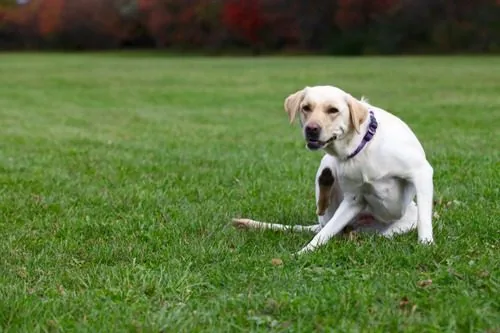Puppy Teething Symptoms: 3 Things Every Pet Parent Should Know
Do you have a young puppy? Do you think she might be entering into her teething phase? Puppies must go through teething, just like human babies, and it’s a difficult and sometimes overwhelming time for both puppy and owner. If you have a puppy, it’s important to know about puppy teething symptoms so you can recognize when your pet has entered this stage of her life.

By learning how to recognize the symptoms of teething in puppies, you can prepare yourself and your puppy both for the experience ahead of time. When you’re ready to face the challenge of teething head-on, it isn’t nearly as difficult for either of you. Read on to find out more!
The Puppy Teething Timeline
Before we talk about the symptoms of puppy teething, it will be beneficial for you to know the general timeline for this part of your puppy’s life. By knowing the different stages of teething and knowing what happens in each, you’ll know what to expect when your pet eventually goes through this.
Below are the general stages of puppy teething:
When Your Puppy Gets All of Her Baby Teeth
Puppies get their first teeth in at just a couple of weeks old. By the time your puppy reaches six weeks of age, she will likely have all of her baby teeth, which means she will have a full mouth of baby teeth before you ever bring her home with you.
Light Chewing and Biting
The first teething stage is a quick one, and it doesn’t involve nearly as much biting and chewing as the second teething stage.
Baby Teeth Start Falling Out
When a puppy’s baby teeth begin to fall out and are replaced with their adult teeth, this is the second stage of puppy teething. This stage usually starts at around four months of age, which means you probably already have your puppy by the time she goes through this teething period.
When Your Puppy Will Get All of Her Adult Teeth
Puppies will continue teething until they reach about nine months old, although some puppies will teethe even longer than this. Your puppy should have all of her adult teeth in by the time she reaches her first birthday, or she may be finished teething a little ahead of this important milestone.
4 Common Symptoms of Puppy Teething
Now that we’ve talked about the general timeline for puppy teething, it’s time to go over the symptoms that mean your pet is going through this.
Below are 4 of the most common symptoms of puppy teething:
Chewing and Biting
Chewing and biting are the first symptoms most pet owners recognize when their puppies are moving into a teething phase. If your puppy is very nippy, or if she wants to chew on furniture and shoes as well as her toys, this is a good indicator she may be teething.
Drooling Excessively
Excessive drooling can also be a symptom of various severe illnesses in dogs and puppies. However, if you notice excessive drooling along with other symptoms on this list, then the chances are good your dog is simply teething.
Bleeding from the Gums
Bleeding from the gums is another common symptom of puppy teething. You may see blood on your dog’s face or paws, but more likely, you’ll notice spots of blood on her toys or on her bedding instead.
Frequent Whining
If your dog is in pain from her teething experience, she will be more likely to cry and whine. If your puppy is whining without any other noticeable cause, chances are good she’s crying because her gums and teeth are hurting her.
Low Fever
Although it is less common than other symptoms on this list, developing a fever can be another symptom of puppy teething. Some puppies may run a low fever with teething, and this is perfectly normal.
How to Help Ease Teething Pain for Your Puppy
While this is a phase of life that every puppy has to go through, there are some things you can do to help with the pain that can come along with some of the symptoms of puppy teething.
Some tips that can help ease the pain of puppy teething symptoms include:
Get Teething Chew Toys
Teething chew toys are a great way to help your puppy ease her teething pain. These toys are soft enough for small puppy teeth to chew safely, but sturdy enough that they can hold up to lots of chewing throughout the teething process. Many companies make high-quality puppy teething chews for this exact purpose.
Start Obedience Training to Help Distract from Chewing and Biting
Start teaching your puppy obedience from the day you bring her home. Although it can be difficult or even impossible for puppies to avoid chewing and biting entirely during the teething experience, a little bit of obedience training goes a long way. Teach your puppy a fun dog command like “touch” to distract her from biting.
Get Treats Designed for Chewing
Give your puppy treats designed for chewing through the teething phase. There are several options available that can help your puppy chew safely and give her a nice treat for chewing on something that isn’t furniture, too. Just make sure you don’t choose anything that contains rawhide, as this can be very dangerous.
Give Your Puppy Ice or Frozen Treats
Finally, try giving your dog some ice or other frozen treats! Puppies can be given peanut butter (as long as it doesn’t contain xylitol) frozen into small bite-sized balls, or you can try freezing some chicken broth (without garlic or onions) instead. Many dogs will enjoy chewing on a plain ice cube, too.
Contact Us for More Information about Puppy Teething Symptoms
Teething can be stressful for you and your puppy alike, so it’s important to take lots of time to play with and cuddle your puppy. This way, she knows she isn’t in trouble, and you can both bond with each other despite the difficulties of teething.
If your puppy seems to be in an extreme amount of pain from teething, or if you’re having trouble dealing with the teething process in any other way, talk to your veterinarian for more information. Your vet may prescribe some mild pain relievers to help your puppy get through the worst part of the teething process.
If you have any questions about puppy teething symptoms, or about your pet’s health in general, call our team today. Our veterinarians will be able to give you advice that can help both you and your pet get through this stage of life. Schedule an appointment at any of our locations to learn more about puppy teething.
Recent Posts
About The Village Vets
The Village Vets is a network of animal hospitals based in Atlanta, GA and the surrounding area. We offer honest, excellent service to our clients in a comfortable, friendly atmosphere. To learn more about our locations and how we can better serve you and your pet, click the button below.
Share This Post
Recent Posts
About The Village Vets
The Village Vets is a network of animal hospitals based in Atlanta, GA and the surrounding area. We offer honest, excellent service to our clients in a comfortable, friendly atmosphere. To learn more about our locations and how we can better serve you and your pet, click the button below.



